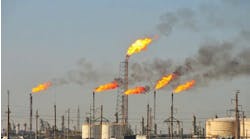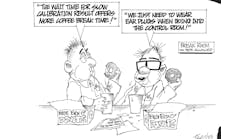A news release from ABB this month suggested that its internal R+D testing of the ABB CoriolisMaster flow meters has shown that it can accurately measure the mass flow rate and density of liquids that contain up to 45% distributed gas inclusion, compared to the industry standard maximum gas volume fraction (GVF), which ABB suggests is around 10%. This is said to extend the parameters of use for the ABB CoriolisMaster so that it can be used in "gaseous applications that have an inconsistent flow in liquids," such as the production of foams and carbonated beverages.
ABB suggests that the S-shape tube design used by the CoriolisMaster minimizes the effects of gas content, as well as changing environmental factors and vibration, whilst providing unparalleled accuracy and stability for "virtually all" applications, with a turndown-ratio capability of up to 2000:1 and accuracy of up to 0.1% of flow rate.
Practical results
Maybe this news release is not so new, because an article in CPP (Chemical Plants + Processing) from October 2007 quotes similar test results on the use of the CoriolisMaster with 50% homogeneously distributed aeration in a very viscous fluid: This reported measurement to 0.5% accuracy at a single flow rate of around 15kg/sec. Nothing else is available from ABB, but the good news is that it all tallies with the comprehensive advice from Tim Patten of Emerson's Micro Motion, in his white paper, "Entrained Gas Handling in Micro Motion Coriolis Flowmeters." Interestingly Patten suggests the use of a tube arrangement with a low resonant frequency for aerated liquids to keep the bubbles in step with the pipe vibration, which might not make the thick-walled S-tube of the ABB unit ideal, as it would probably be stiff.
Joel Weinstein, a research and applications engineer from Micro Motion, presented a paper to last month's North Sea Flow Measurement Workshop, describing the recent Micro Motion work establishing the limitations of Coriolis technology in oil and gas multi-phase conditions. This paper explains the background to the physical error mechanisms introduced with a second phase (whether this is a gas or a solid) in what is mainly a liquid flow.
An effect called "decoupling" relates to relative motion between the gas bubbles and the base liquid phase inside the vibrating tubes of the meter because the bubbles are not following the pipe vibration they introduce a flow measurement error. Such errors can be minimized by having smaller bubbles (from better mixed flows; higher velocities are higher pressure), more viscous liquids and lower frequency tube vibrations.
Best practice results
Weinstein concludes that following these recommendations with the best Micro Motion Elite sensor would lead to a better than 1% accuracy in mass flow rate measurement up to 5% GVF for high flow rates. Weinstein points out that 5% GVF is an enormous amount of entrained gas in typical continuous liquid applications and is extremely rare in practice. Long before reaching this level of gas, he suggests there would be broken valves, pumps, seals, etc. Also of interest is that Micro Motion Coriolis meters provide a diagnostic output of the drive power required to vibrate the meter tubes, which rises considerably when there is any decoupling present, since this represents work done at the liquid/gas interface. It can signal the presence of aeration sufficient to cause an erroneous reading.


